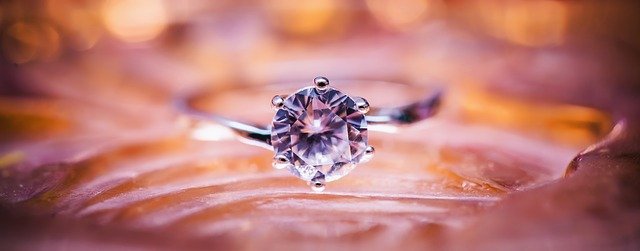Start Growing Your Perfect Diamond Ring Today
Lab-grown diamonds are also known as cultured diamonds, manufactured diamonds, synthetic diamonds, and other terms. Whatever you want to call them, they have certainly made a splash in the diamond market.
Simply described, they are diamonds that have gotten created in a laboratory. These laboratories use cutting-edge technology to mimic the natural processes that lead to the formation of diamonds on the surface of the earth. The end product is a lab-created diamond chemically, physically, and visually identical to a mined diamond.
Since lab-grown diamonds get developed in labs, they are the best way to ensure you get the perfect diamond. With that, here is how lab-grown diamonds get pressured to perfection.
Setting
Gem experts construct regulated and hot environments to which they add carbon to produce lab created diamond rings. The carbon is then heated using one of two current processes — CVD or HPHT — causing it to crystalize and turn diamond clear, precisely as it does in nature!
These lab-grown diamonds get made up of real carbon atoms organized in the diamond crystal structure. They have the same visual and chemical qualities as natural diamonds because they form the same chemical properties.
Style
There are 4 C’s to consider when talking about diamond style.
First and foremost, there is color. The ideal diamond is colorless. Therefore colorless diamonds are the most expensive. Although most diamonds appear colorless, they have modest yellow or brown undertones.
Second, cut. The proportions, finish, symmetry, and polish of the diamonds get referred to as the cut. These elements determine the intensity and brilliance of a diamond. A well-cut diamond is proportional, symmetrical, and polished; these diamonds are usually the most valuable.
The third point to consider is clarity. Inclusions and imperfections occur during the growing process of diamonds, whether mined or lab-grown. There are several grades of diamonds, ranging from Flawless to Included.
Finally, the Carat stipulation will get covered in more detail later.
Metal Type
Synthetic diamonds get created by converting graphite at 1500°C–3000°C (2800°F–5500°F) and 5.2–10.35 MPa (0.75–1.5 x 106 psi) in the presence of catalysts such as iron, chromium, nickel, titanium, radium, and cobalt yield synthetic diamonds. When compared to natural diamonds, these are more friable and have coarser facets.
Stone Shape
Gem cutters, often known as lapidaries, meticulously select the eventual shape of any gem. In this regard, lab-created diamonds are no different from any other stone. The stone gets evaluated to see if it is suitable for a faceted cut. This stipulation will be obvious in some cases, such as with an opaque stone, and in others, a good light and magnifying will be required. After that, the lapidary examines the crystal structure.
There are inclusions or flaws in a specific section of the stone that can be cut out or disguised by facets. In the end, the purpose of faceted stones can be to get the maximum “fire” or sparkle, to increase the size of the stone, or any combination of these elements.
Carat
Lab-grown diamonds and synthetic diamonds such as Moissanites, like naturally mined diamonds, exist in various forms, sizes, and carat weights. Any size you can think of can be found and mined in nature, as well as in a laboratory setting.
A full-size, 1-carat lab-grown diamond weighs .2 grams.
The weight in grams doubles every 1 carat of lab diamond. The average lab diamond for an engagement ring is one carat, similar to naturally mined diamonds.
Price
Your lab-grown diamond’s price will almost certainly vary depending on where you buy it and whether you get a mass-produced one or one that is custom-made. There will certainly be a price difference between those purchased in a physical store and those acquired online. However, the average price of a 1-carat lab-grown diamond is between $800 and $1,000 per carat.
Other Diamond Options
Aside from rings, you may find lab-grown diamonds in a variety of other popular accessories. There will always be a diamond piece to suit your lifestyle, whether earrings, necklaces, bracelets, or other charms.
Conclusion
To set things straight: lab-grown diamonds are genuine diamonds. A crystallized carbon structure gets seen in artificial and mined diamonds, so they are identical in every way, from their physical look to their molecular makeup.
Lab-grown diamonds, on the other hand, go beyond timeless aesthetics by removing harmful environmental repercussions. Earth-mined diamonds are not only more expensive for you, but they are also more costly for the world.
Thus, given the impact that your choices hold, why not choose to grow your perfect diamond instead?

